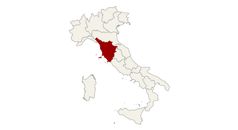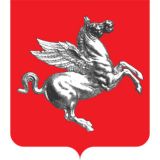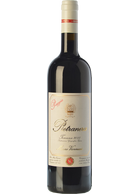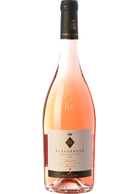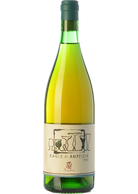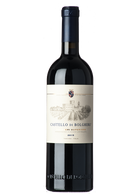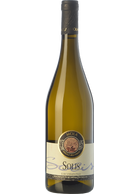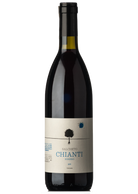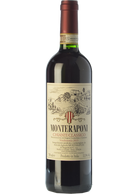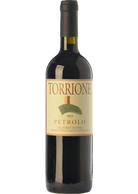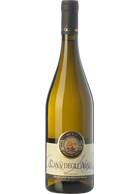Wine from Tuscany
Introduced by the Etruscans and perfected by the Greeks, viticulture in the Tuscan area was clouded in Roman times. The rebirth occurred in the Middle Ages, in the abbeys and in the castles of the nobles. During the Renaissance Tuscan wines were already known on illustrious tables. The decree of the Grand Duke Cosimo III de' Medici dates back to 1716 and defines the boundaries of four wine areas (Chianti, Pomino, Carmignano, Valdarno di Sopra), considered the first denominations in history. In the nineteenth century, while Chianti established itself on the market as a ready-to-drink wine, in 1888 Ferruccio Biondi Santi produced the first Brunello vintage. Today, Tuscan viticulture is one of the most advanced in Italy, with substantial investments in the market and on the farming systems. From 60,000 hectares of vineyards, Tuscany produces 2.8 million hl of wine (2014) and constitutes about 25% of Italian exports.
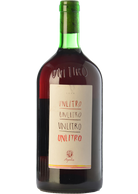
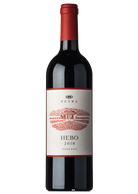
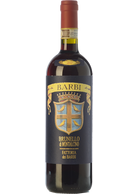
Fattoria dei Barbi Brunello di Montalcino 2019


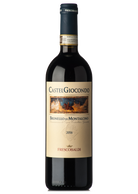
Castelgiocondo Brunello di Montalcino 2019


Colombaio di Santa Chiara Selvabianca 2023
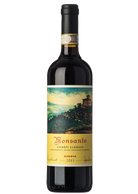
Castello di Monsanto Chianti Classico Riserva 2020


Castello di Monsanto Chianti Classico 2022

La Braccesca Vino Nobile di Montepulciano 2021


Salcheto Vino Nobile di Montepulciano 2021
BIO


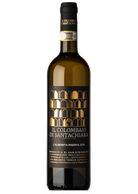
Colombaio di Santa Chiara L'Albereta 2018
Tuscany
Introduced by the Etruscans and perfected by the Greeks, viticulture in the Tuscan area was clouded in Roman times. The rebirth occurred in the Middle Ages, in the abbeys and in the castles of the nobles. During the Renaissance Tuscan wines were already known on illustrious tables. The decree of the Grand Duke Cosimo III de' Medici dates back to 1716 and defines the boundaries of four wine areas (Chianti, Pomino, Carmignano, Valdarno di Sopra), considered the first denominations in history. In the nineteenth century, while Chianti established itself on the market as a ready-to-drink wine, in 1888 Ferruccio Biondi Santi produced the first Brunello vintage. Today, Tuscan viticulture is one of the most advanced in Italy, with substantial investments in the market and on the farming systems. From 60,000 hectares of vineyards, Tuscany produces 2.8 million hl of wine (2014) and constitutes about 25% of Italian exports.
With a territory two thirds of which is hilly, Tuscany boasts optimal exposures and ventilations everywhere. The soils are very varied, from the limestone-sandstone of the coasts to the marly-clayey of the internal valleys, with volcanic, sandstone and tuffaceous elements depending on the area. The same is true for the climate, which is temperate, but variable from the Mediterranean coasts to the continental Apennines, with stiff peaks and greater rainfall.
In the region, which is red par excellence, the master is Sangiovese, which likes marly and calcareous soils and gives structured, tannic, fresh and long-lasting wines. It is found in the Chianti and Chianti Classico DOCG, a historic territory between Siena and Florence, often together with Canaiolo and Colorino. And it is found in the Vino Nobile di Montepulciano DOCG, from the marly soils towards the border with Umbria, and Brunello di Montalcino (pure), in Val d'Orcia . With a minimum ageing of 50 months of which two years in large barrels, this is one of the most powerful, elegant and well-known wines in the world. Most ready interpretations of Sangiovese can be found in the Montecucco Sangiovese DOCG and Morellino di Scansano, in the Grosseto area.
The French vines have been present for centuries in Carmignano, which today is a DOCG near Prato, where Cabernet meets Sangiovese. In more recent times these grapes have been planted in many areas for the production of Supertuscans, wines often without denomination but of very high quality. They are to be found in the Chianti and Maremma areas, on the coastal plains around the Bolgheri DOC, the area in which wines like Sassicaia and Masseto stand out. Cabernet Sauvignon and Merlot are also enhanced in recent Val di Cornia Rosso and Suvereto DOCG, near Piombino, while Syrah excels in some internal areas, like the Cortona DOC, from mineral soils.
The greatest Tuscan white is the Vernaccia di San Gimignano, DOCG of the Siena area, a historic wine of great fullness, minerality and longevity. In the coastal area, the Vermentino is produced and, from the Grossetano to the Argentario and on the Island of Elba, the Ansonica, a fresh and fragrant wine known elsewhere as Inzolia. The most common white vines are the Trebbiano and the Malvasia, once included in the Chianti blend. These grapes contribute to the Vin Santo, a passito produced with ageing up to 12 years in casks of about 100 litres placed in attics exposed to the seasons. It is a dense wine, sometimes viscous and aromatic, broad, persistent, oxidative. Vin Santo is also produced from Sangiovese passito, taking the name of Occhio di Pernice. Other passito wines are the Aleatico dell'Elba, agile and fragrant red, and the Moscadello di Montalcino, a white Muscat produced in the DOCG area.
The very high quality standards required by the great DOCGs have led to the creation of so-called “spillover” denominations, which include more ready and drinkable wines than their “big brothers” from the same territory, undergoing less rigorous sorting and shorter ageing or by including less-valued grapes: for example DOC wines such as Sant'Antimo, Rosso di Montalcino, Rosso di Montepulciano, San Gimignano and Barco Reale di Carmignano.
